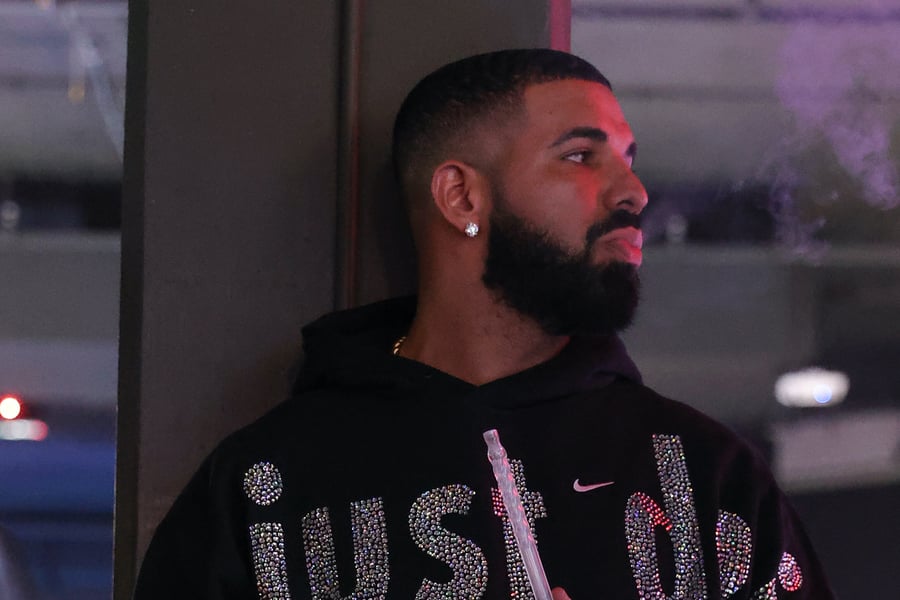Most young kings get their heads cut off; Drake just got a new haircut. After 11 years in music, Drake’s crown seems to be so firmly established that he has time to relish some of the visual conceits that come with being a chameleonic rapper living out his megastar aspirations. The much-discussed Valentine’s-inspired design he’s been sporting for the rollout of his overachieving new album, Certified Lover Boy, is something like a half-moon part — that thugged-out barber’s chair staple, à la Raekwon — for the set who serenades by candlelight.
Drake’s closest analogue in rap, LL Cool J, had similar designs in the late 1980s. Not in his hair, which was hidden by his signature red Kangol for the entirety of that decade, but in his music. Back then, the Hollis, Queens legend’s malleable modus operandi — rough rhymes to captivate dudes in the barbershop, and smooth ballads to thrill ladies in the salon — drew fire from a slew of rappers (Kool Moe Dee, Ice-T, MC Shan, to name a few) who begrudged his crossover hits and found him too materialistic. Basically, the feeling was, “My would-be high-school sweetheart’s prom date ain’t supposed to rap.”
That success can be hazardous is a theme that Drake’s chief rival, Kanye West, who depicted himself in the video for 2010’s “Power” standing beneath the mythical Sword of Damocles, has explored at length. Long before the tacky spectacle of two grown men in a high tax bracket taking shots at each other, he’d had enough public meltdowns to illustrate this truism in his life as well as his art. For Kanye, a relentless drive to capture the world’s attention has ended in media scrutiny and not a little scorn; for Drake, it means more legit blockbuster moments, with little lasting backlash. Ambition for Ye has proved a handicap. For Drake, it’s just another settle-all-scores victory lap.
CLB contains some signs that the OVO algorithm is finally loosening its grasp. The Right Said Fred-sampling “Way 2 Sexy” is a no-brainer anthem, but despite a sticky Future hook, there’s something that rings a bit hollow: Drake deliberately lags behind the track, sounding sluggish, rather than sui generis (as on 2017’s triumphant “Gyalchester”). Meanwhile, he gives us only one likely caption for social media: “I’m way too sexy to go unprotected.” Most artists would give up half their publishing for just one trending-worthy line like that. When it’s coming from Drake, it feels like more of the same.
For the longest, it’s seemed clear that Drake cracked the code and used timing to his advantage. If he’s a millennial LL Cool J, he hasn’t gotten many chin-checks from the culture. The most casual Drake fan — and the OVO machine has ensured that there are many of those — seems to recognize there’s something special about him. His music is about being in the moment while reflecting on it. Good and bad memories, past grudges, regrets, and old flames color the present moment with the takeaway usually being, This isn’t as enjoyable as it should be.
A decade ago, with “Marvins Room,” Drake took that angst and made it pop. He created a new kind of stardom by making social awkwardness somehow social again — just ask the groups of friends on crowded club floors that year who sang “I’ve been drinking so much that I’ma call you anyway.”
A couple decades before that, LL did much the same thing. In 1989, he was at a comparable place to where Drake is now. With the release that year of his glossy Walking with a Panther album, his placate-everyone approach had finally begun to grow stale. No half-hearted passes for a less-than-stellar product, though. During the height of Black nationalism in hip-hop, he got booed offstage at a rally at the Apollo for slain teen Yusef Hawkins. He responded a year later with what many consider to be his best album: The rugged, Marley Marl-produced Mama Said Knock You Out, which re-solidified his hardcore bona fides.
Love Music?
Get your daily dose of everything happening in Australian/New Zealand music and globally.
Drake now has a chance to follow a similar route. Instead of appealing to the broadest possible audience, he might lean into a specific pocket. Do we want to hear a socially conscious Drake? Surely, his expertly curated collabs and heartfelt videos, with cameos from Big Freedia, Tracee Ellis Ross, Issa Rae, and City Girls, display a hyper-awareness and diversity that keeps the think-pieces churning. But we have yet to hear more than a few cogent words from The Boy about, say, the Movement for Black Lives.
If he wants to, Drake still has time to make sure he doesn’t get too gassed on his unquenchable yearnings for success. He’s proven he’s both a lover and a fighter. His next battle doesn’t need to be against himself.
From Rolling Stone US



































